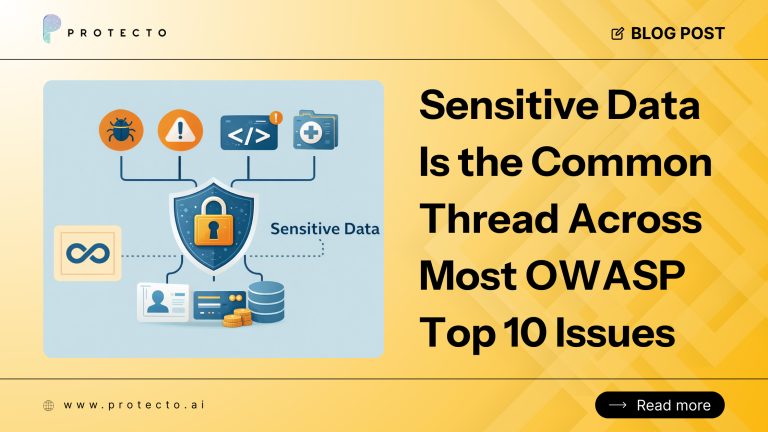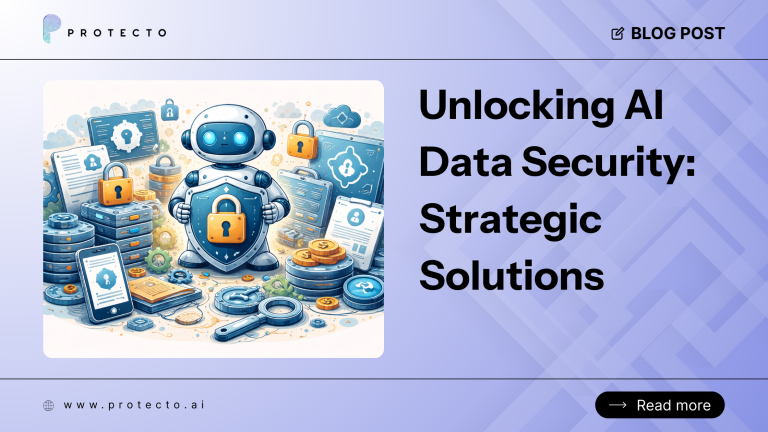Pseudonymization is a data management technique that replaces identifiable information with pseudonyms to protect individuals’ privacy. Under this technique, data is transformed in a way that makes it impossible to identify the individuals to whom it belongs. The concept of pseudonymization is gaining popularity as more companies appreciate the importance of data privacy and want to safeguard access to personal information.
What is Data Pseudonymization?
Data pseudonymization is the process of substituting identifiable data with a pseudonym or a code. Pseudonymization is a privacy-enhancing technique that helps protect sensitive data from unauthorized access. The pseudonymized data is then stored separately from the original data, ensuring that even if the pseudonymized data is compromised, the actual data remains secure.
Pseudonymization is not the same as anonymization, as the latter process involves completely removing identifiable data. As a result of pseudonymization, personal data is transformed so that it is difficult to associate it with a particular individual. This is particularly important in fields such as healthcare, where the privacy of patient data is of utmost importance.
Pseudonymization can be applied to different types of data, including personal, health, financial, and any other sensitive data. The pseudonymization process can be performed manually or automatically using software tools. In addition, pseudonymization can be combined with other privacy-enhancing techniques, such as encryption and access controls, to enhance the security of sensitive data further.
Overall, data pseudonymization protects sensitive data and ensures personal data privacy. Its use is becoming increasingly important in today’s digital world, where the collection and processing of sensitive data are becoming more prevalent.
Importance of data pseudonymization
The importance of data pseudonymization cannot be overstated in the current digital age, where data breaches are rampant. By pseudonymizing personal data, businesses can minimize the risk of exposing their customers’ sensitive and personal information to unauthorized parties. Pseudonymized data is also valuable for facilitating data portability and interoperability.
Under the General Data Protection Regulation (GDPR), pseudonymization is recognized as a recommended technique for ensuring data privacy. Pseudonymization is the process of replacing identifying information with a pseudonym or a fictitious name or identifier. This technique satisfies some of the GDPR’s requirements, including obtaining explicit consent from data subjects and the necessity to notify subjects in case of a data breach. Pseudonymization can also protect data when performing research or analysis, as it allows for the use of the data without revealing the identity of the individuals involved. It is important to note, however, that pseudonymization is not a foolproof method of data protection, and best practices dictate that it must be used in conjunction with other security measures to ensure the safety of personal data.
How to implement pseudonymization in your organization
Implementing pseudonymization in your organization requires a clear understanding of pseudonymization techniques and the relevant regulations. The following five steps can help you implement pseudonymization in your organization:
1. Begin by identifying the sensitive data that needs to be pseudonymized. This includes personal data, financial data, health data, and any other sensitive data.
2. Choose a pseudonymization technique appropriate for your data. This could be manual or automated pseudonymization, depending on the complexity of the data.
3. Develop a policy that outlines how pseudonymization will be implemented in your organization. The policy should include data handling, storage, and sharing guidelines.
4. Train your team on the pseudonymization policy and the relevant regulations. This will help them understand the importance of data privacy and how to handle sensitive data.
5. Regularly monitor compliance with the pseudonymization policy to ensure it is followed across the enterprise. This includes tracking data handling, data storage, and data sharing.
Challenges with pseudonymization in data privacy
Implementing pseudonymization comes with its own set of challenges. Listed below are some of the challenges that organizations face when implementing pseudonymization:
Technical challenges
Pseudonymization can present serious technical challenges, particularly when handling complex data sets. Automated pseudonymization tools may be inadequate for the task at hand, necessitating manual intervention. One of the biggest technical challenges is ensuring that pseudonymized data remains useful for research and analysis while preserving privacy. This requires careful consideration of the pseudonymization algorithm used and the level of detail that must be retained in the resulting data. Another challenge is developing a system for managing, storing, and sharing pseudonymized data securely and responsibly. This requires effective data governance policies and procedures, as well as robust security measures to prevent unauthorized access or data breaches. Overall, successful pseudonymization involves a combination of technical expertise, careful planning, and practical implementation to ensure that the privacy of individuals is protected without compromising the usefulness of the data for research and analysis.
Legal challenges
One of the leading legal challenges associated with pseudonymization is ensuring compliance with various regulations, such as the General Data Protection Regulation (GDPR). This is particularly important given that pseudonymization is often used to protect sensitive personal data. It is vital for organizations to ensure that they have appropriate policies and procedures in place to comply with these regulations. Failure to do so can lead to significant legal and financial penalties.
For example, GDPR stipulates that any organization processing personal data must implement appropriate technical and organizational measures to ensure data security. This includes pseudonymization as a means of protecting personal data. However, GDPR also specifies that pseudonymized data is still considered personal and subject to the exact legal requirements as non-pseudonymized data.
In addition to GDPR, there may be other legal requirements that organizations must adhere to when implementing pseudonymization. For example, in some jurisdictions, such as the United States, specific laws may govern the use of pseudonymized data in certain contexts. Therefore, organizations must ensure that they are aware of all relevant legal requirements and take steps to comply with them.
Security-related challenges
To ensure the security of pseudonymization data, organizations must take several measures. First, they must ensure that the pseudonymized data is stored securely, using appropriate security controls, such as encryption, access controls, and firewalls. Second, they must restrict access to pseudonymized data to only authorized users who have a legitimate need to access the data. Third, they must implement procedures to prevent data breaches, such as monitoring and auditing data access, detecting and responding to security incidents, and conducting regular security assessments.
In addition, organizations should consider the risks associated with disclosing pseudonymized data and take steps to mitigate them. For example, they could use data masking, tokenization, or anonymization techniques to protect the data further. They could also implement policies and procedures to ensure the privacy of individuals’ data, such as obtaining consent, providing transparency, and enabling individuals to exercise their rights.
In summary, by taking appropriate measures to address each of the above challenges, organizations can maintain the confidentiality, integrity, and availability of pseudonymized data and comply with data protection regulations.
How Protecto can help create a robust data pseudonymization strategy
Protecto helps organizations create a robust data pseudonymization strategy. Protecto’s Data Privacy Vault offers automated pseudonymization tools that handle complex data sets, ensuring that sensitive data is protected. Protecto also helps organizations comply with relevant regulations, such as the GDPR, by providing data handling, storage, and sharing guidelines.
Protecto’s Privacy Vault offers developers turnkey APIs to facilitate on-demand data pseudonymization with ease and at scale. Privacy Vault uses tokenization to make personally identifiable data non-identifiable, while also providing a zero-trust infrastructure, excellent performance, and scalability.
Get in touch with us to schedule a consultation on Protecto Privacy Vault can help pseudonymize your sensitive data or request a demo.



